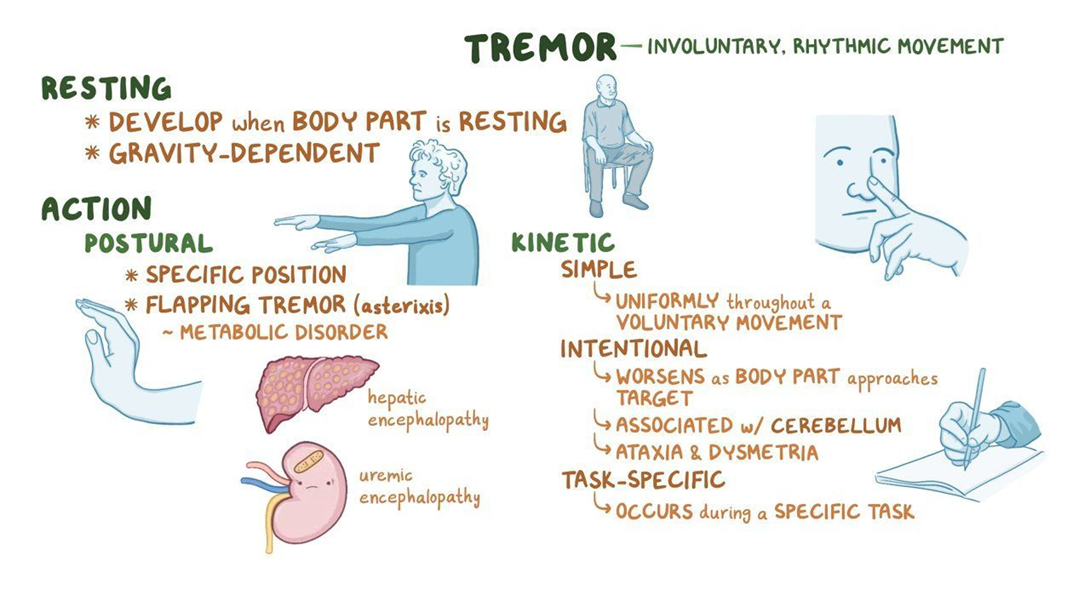Forty-eight hours after starting haloperidol, the client is observed standing by the nurse’s station with his neck arched sharply backward. The nurse recognizes that the client:
Is having pseudo-Parkinsonian side effects and needs to have his medication adjusted.
Is experiencing temporary side effects that usually disappear after several days.
Needs to have the dosage increased because of psychotic behavior that is increasing.
Needs immediate treatment and is experiencing an acute dystonic reaction to the drug.
The Correct Answer is D
Choice A Reason:
Pseudo-Parkinsonian side effects, also known as drug-induced parkinsonism, can occur with the use of antipsychotic medications like haloperidol. These side effects include symptoms such as rigidity, bradykinesia, tremor, and postural instability. However, the description of the client’s neck arched sharply backward is more indicative of an acute dystonic reaction rather than pseudo-Parkinsonian side effects. Pseudo-Parkinsonian symptoms typically develop more gradually and do not present with such dramatic posturing.
Choice B Reason:
While some side effects of haloperidol can be temporary and may disappear after several days, the acute dystonic reaction described in the scenario requires immediate intervention. Acute dystonic reactions are characterized by sudden, severe muscle contractions that can be painful and potentially dangerous if they involve the airway. Therefore, it is crucial to address this reaction promptly rather than waiting for it to resolve on its own.
Choice C Reason:
Increasing the dosage of haloperidol in response to the described symptoms would likely exacerbate the situation. The client’s symptoms are not indicative of worsening psychotic behavior but rather an adverse reaction to the medication. Increasing the dosage could lead to more severe side effects and complications. The appropriate response is to treat the acute dystonic reaction and reassess the medication regimen.
Choice D Reason:
An acute dystonic reaction is a known side effect of antipsychotic medications like haloperidol. It involves sudden, severe muscle contractions, often affecting the neck, face, and back. This reaction can be distressing and requires immediate treatment with anticholinergic medications such as benztropine or diphenhydramine. Prompt intervention can relieve the symptoms and prevent further complications.

Nursing Test Bank
Naxlex Comprehensive Predictor Exams
Related Questions
Correct Answer is ["A","C","D"]
Explanation
Choice A Reason:
The statement “Documentation of the event will include interventions attempted prior to initiating restraints” is correct. Proper documentation is crucial when restraints are used. This includes detailing the client’s behavior that necessitated the restraint, the interventions attempted before applying the restraint, the type of restraint used, and the time it was applied. This documentation ensures transparency and accountability, and it helps in evaluating the necessity and appropriateness of the restraint use.
Choice B Reason:
The statement “The physician must be present at the time of the restraint episode” is incorrect. While a physician’s order is required for the use of restraints, the physician does not need to be physically present at the time of the restraint episode. However, the physician must evaluate the client within a specified time frame after the restraint is applied, typically within one hour. This ensures that the restraint is medically justified and that the client’s condition is appropriately monitored.
Choice C Reason:
The statement “The client will be turned every 2 hours” is correct. Clients in restraints must be regularly repositioned to prevent complications such as pressure ulcers and to ensure their comfort. Turning the client every 2 hours is a standard practice to maintain skin integrity and promote circulation. This intervention is part of the comprehensive care plan for clients in restraints.
Choice D Reason:
The statement “The client will need to be monitored every one-half hour” is correct. Frequent monitoring of clients in restraints is essential to ensure their safety and well-being. This includes checking for signs of distress, ensuring that the restraints are not causing harm, and assessing the client’s vital signs5. Monitoring every 30 minutes helps in promptly addressing any issues that may arise and ensures that the restraints are used safely and effectively.
Correct Answer is ["5"]
Explanation
Step 1: Identify the volume of one container in milliliters.
- 1 ounce = 29.5735 mL
- 6 ounces = 6 × 29.5735 mL = 177.441 mL
Step 2: Determine the total volume needed.
- Total volume needed = 850 mL
Step 3: Calculate the number of containers required.
- Number of containers = Total volume needed ÷ Volume of one container
- Number of containers = 850 mL ÷ 177.441 mL
Step 4: Perform the division.
- 850 mL ÷ 177.441 mL ≈ 4.79
Step 5: Round to the nearest whole number.
- 4.79 rounded to the nearest whole number = 5
Result: The minimum number of containers of juice needed is 5.
Final Answer: 5 containers
Whether you are a student looking to ace your exams or a practicing nurse seeking to enhance your expertise , our nursing education contents will empower you with the confidence and competence to make a difference in the lives of patients and become a respected leader in the healthcare field.
Visit Naxlex, invest in your future and unlock endless possibilities with our unparalleled nursing education contents today
Report Wrong Answer on the Current Question
Do you disagree with the answer? If yes, what is your expected answer? Explain.
Kindly be descriptive with the issue you are facing.
